Authors: Mandira Barman* and V.K. Sharma
Division of Soil Science and Agricultural Chemistry, ICAR-Indian Agricultural Research Institute, New Delhi-110 012
*Corresponding author E-mail: mandira.ssaciari@gmail.com
Micronutrient deficiencies are common in Indian soils which are leading to low yields, low mineral content in seed and fodders and thus adversely affecting plant, animal and human health. Deficiency of zinc, iron, copper, manganese, boron, molybdenum and sulphur has been noticed in 49, 12, 3, 5, 33, 13 and 41% areas of the country. When a soil is deficient in micronutrient, plant grown on it will also face deficiency of that particular micronutrient and can express symptoms called deficiency symptoms. Deficiency symptoms can be useful in recognizing that something is wrong with the plant and can lead to the discovery of the cause. Deficiency symptoms of micronutrient and their management are given below:
Zinc deficiency symptoms
• Common deficiency symptoms of Zn are interveinal chlorosis, first appearing in the young leaves, reduction in the size of young leaves, which are often clustered or brown very closely, bronzing and purple, violet, reddish brown or brown coloration of foliage.
• Names given to Zn-deficiency include khaira disease of rice, white bud of maize, mottle leaf (little leaf) or frenching of citrus and cotton.
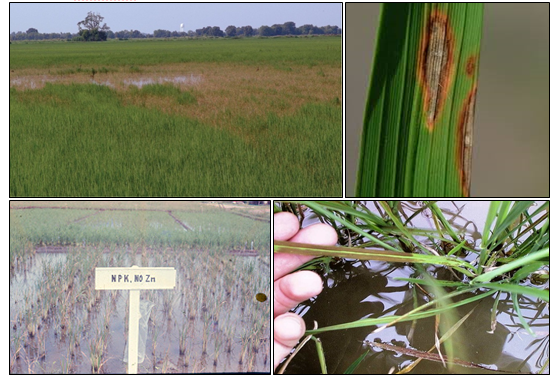
Figure 1. Zinc deficiency on rice
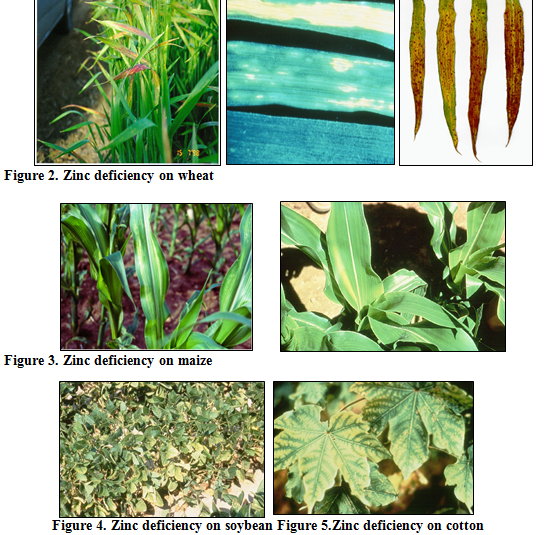
Copper deficiency symptoms
• Male flowers’ sterility, delayed flowering and senescence are the most important effects of Cu-deficiency.
• Chlorosis of the younger shoot tissues, white tips, reclamation disease, necrosis, leaf distortion and die-back are the characteristic Cu-deficiency symptoms.
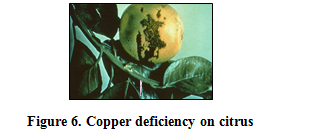
Iron deficiency symptoms
• Deficiency of Fe results in interveinal chlorosis appearing first on the younger leaves with leave margins and veins remain green.
• Under severe deficiency whole plant turns necrotic.
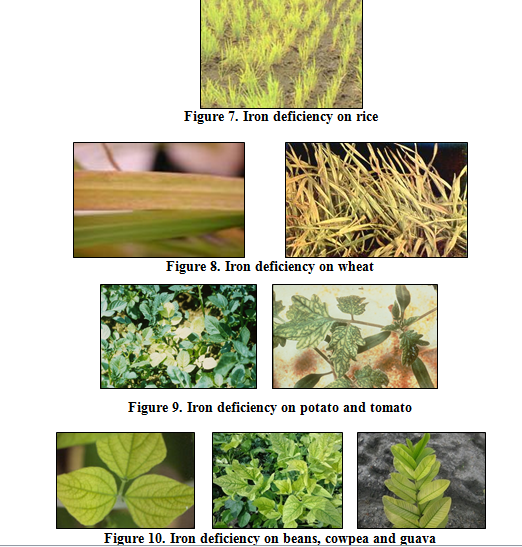
Manganese deficiency symptoms
• Deficiency symptoms of Mn are more severe on middle leaves than on the younger ones because Mn is preferentially translocated to the younger tissue.
• White spots on chlorotic leaf areas soon become necrotic and turn red, reddish-brown or brown.
• Symptoms of Mn-deficiency are popularly known as speckled yellow of sugarbeet, marsh spot of peas, grey speck of oats and pahala blight of sugarcane.
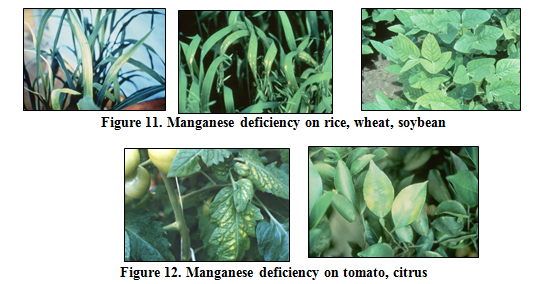
Boron deficiency symptoms
• Boron deficiency symptoms become conspicuous on the terminal buds or the youngest leaves, which become discoloured and may die under acute conditions of deficiency.
• Typical disorders are brown heart of turnip, heart rot of sugar beet, cracked stem of celery, stiff rolling of upper leaves in potato, browning or hollow stem of cauliflower, internal browning of tomato, black spot on vegetative point in field beans, yellow top of alfalfa etc.
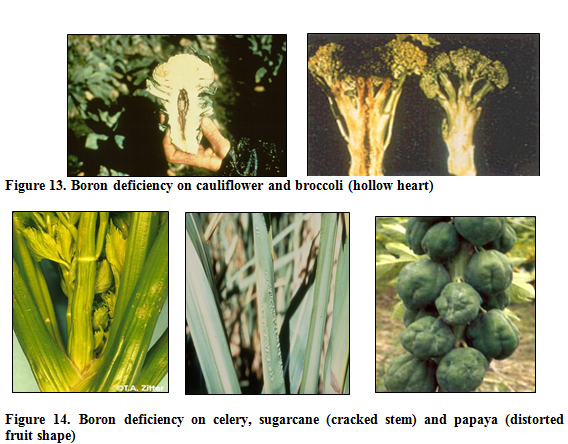
Molybdenum deficiency symptoms
• Generally, in Brassica spp. deficiency symptoms of Mo appear in 3 to 4 week-old plants.
• The Mo-deficient cauliflower plants exhibit chlorotic mottling and cupping of the middle leaves.
• Severely affected leaves show scorching and withering starting from the margins and extending to the entire lamina leaving behind only petioles, which is termed as whip-tail.
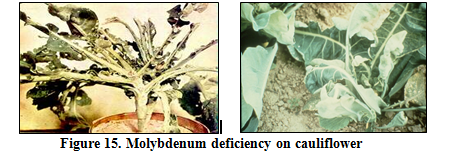
Deficiency of micronutrient declines crop health and productivity and may result in the appearance of unusual visual symptoms. As a diagnostic tool, visual observation can be limited by some factors, such as including hidden hunger and pseudo deficiencies. Therefore, soil or plant testing is required to verify the nutrient stress. However, the evaluation of visual symptoms in the field is an inexpensive and quick method for detecting potential nutrient deficiencies in crops. It is an important tool for managing and correcting soil fertility and crop production problems.
About Author / Additional Info:
Dr. Mandira Barman is a Scientist in the Division of Soil Science and Agricultural Chemistry, ICAR-Indian Agricultural Research Institute (ICAR-IARI), New Delhi, India since 2012. Her area of research interest is chemistry of micro nutrients in soils in relation to their availability to plants and nanotechnological applications to enhance nutrient use efficiency. Dr. Mandira has completed her Ph.D. on nickel nutrition of plant from ICAR-IARI, New Delhi. She is serving as Joint Secretary cum Treasurer in Delhi Chapter of the Indian Society of Soil Science.